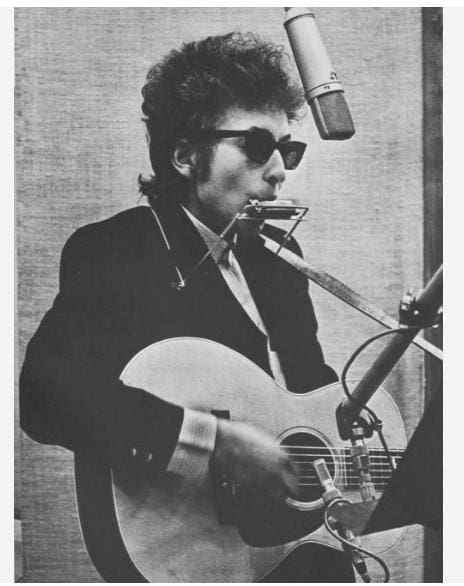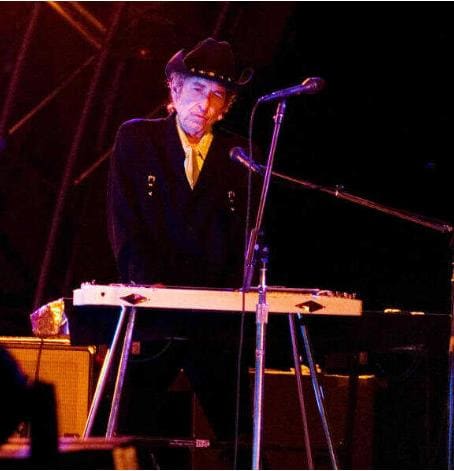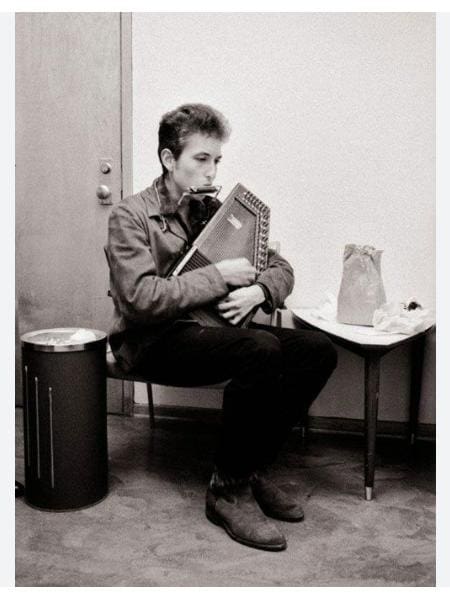Bob Dylan, born Robert Zimmerman in 1941, has left an indelible mark on popular music through his incomparable lyricism, raspy vocals, and the array of instruments he has used to convey his profound narratives. This article explores the range of musical instruments that have played a pivotal role in Dylan’s monumental career.
Banjo
Dylan’s early foray into folk music involved embracing the banjo, another traditional folk instrument. His interest in the banjo began in his early days in Minnesota, continuing into his time in New York City’s Greenwich Village, where he was immersed in the folk revival scene. Dylan’s banjo playing is reflective of his deep respect for folk traditions and his ability to integrate these elements into his unique musical style.
Acoustic Guitar
At the heart of Dylan’s music is his relationship with the acoustic guitar. Influenced by the folk traditions of Woody Guthrie and Pete Seeger, Dylan began his journey with a simple, yet effective, approach to the instrument. Over time, his mastery of open chords, strumming patterns, and alternate tunings formed the backbone of timeless songs like “Blowin’ in the Wind” and “The Times They Are a-Changin’.”
Dylan’s style on the acoustic guitar is notable for its simplicity and directness. His skill lies not in elaborate solos or complex picking patterns, but in creating a sturdy musical foundation that supports his powerful lyrical narratives.
Harmonica
Another instrument closely associated with Dylan is the harmonica, often heard in tandem with his guitar playing. He usually wears it around his neck with a harmonica holder, allowing him to play it while strumming the guitar. This creates a distinct, layered sound that has become one of his musical trademarks. His harmonica solos, which often echo the melody of the song, add a raw and emotionally expressive dimension to his performances.

Electric Guitar
Dylan’s transition from acoustic folk to electric rock in the mid-1960s was a pivotal moment in his career. His controversial “electric” debut at the 1965 Newport Folk Festival, where he played a Fender Stratocaster, marked a stylistic shift that initially bewildered his folk-oriented fan base.
His use of electric guitar allowed him to explore new sonic territories. The rich, electrified sound brought a new edge to his music, evident in classic songs like “Like a Rolling Stone.” Dylan’s work on the electric guitar, though still not technically flashy, carried more weight and resonance, amplifying the intensity of his lyrics.

Keyboards
As his career progressed, Dylan increasingly incorporated keyboards into his music. The piano is featured in some of his most iconic tracks, including “Desolation Row” and “Ballad of a Thin Man.” He later started playing the organ, which became a significant component of his sound during his ‘Blues-Rock’ phase. He has also been seen playing the accordion, which he used effectively to add texture and depth to his music.

Autoharp
Another instrument Dylan has utilized is the autoharp. The autoharp is a stringed instrument traditionally used in country and folk music, and its distinctive sound can be heard in songs from Dylan’s country-tinged era, adding another layer to his musical versatility. His use of the autoharp speaks to his ability to blend diverse musical traditions into his own compositions.

Exploration of World Instruments
Further testament to Dylan’s musical curiosity is his exploration of world music instruments. Throughout his career, he has incorporated a wide variety of these into his music, from the African drumming influences in “Man Gave Names to All the Animals” to the Mariachi-style trumpet on “Romance in Durango”. These instances highlight Dylan’s willingness to experiment with new sounds and push the boundaries of his musical style.
Though Bob Dylan’s greatest contribution to music lies in his unparalleled songwriting, his instrumental skills have been an integral part of his sound. His mastery over various instruments – primarily the acoustic guitar, harmonica, electric guitar, and keyboards – have allowed him to continually reinvent his musical style over the course of a career that spans more than six decades.
Bob Dylan is a music chameleon, continually evolving and pushing the boundaries of his sound. He has never been afraid to experiment with different genres, sounds, and instruments. His instrument choices tell a story of a man deeply in tune with the rich tapestry of global music traditions, using these tools to tell his stories and express his unique point of view.
Cansu Demir
